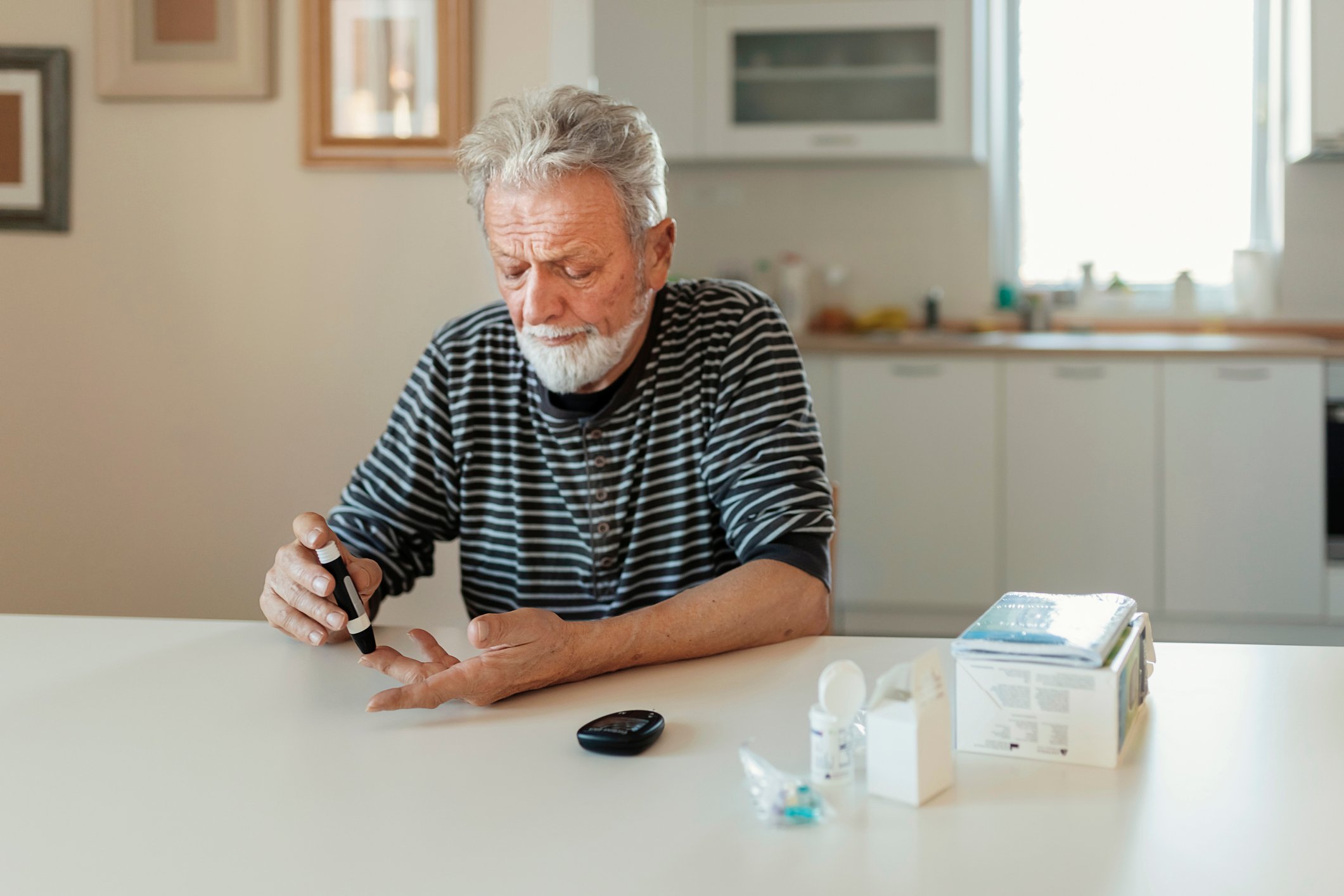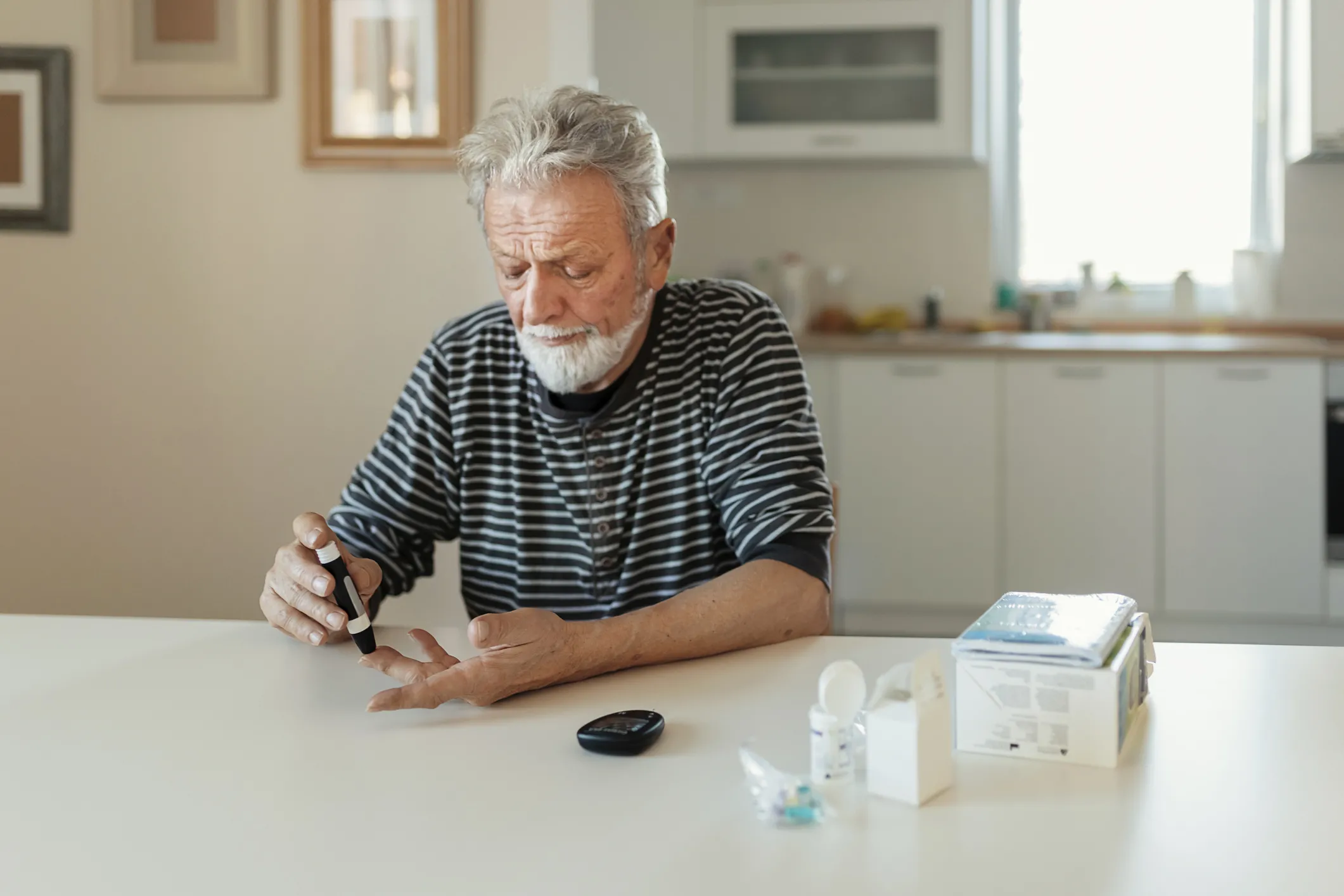Diabetic Wounds and Foot Ulcers
How Does Diabetes Lead to a Diabetic Wound?
Diabetes is a disease where the body does not make enough insulin. The body needs insulin to break down sugar. Too much sugar will stay in your bloodstream and can harm your body. When a person has diabetes, wounds can take longer to heal, which can increase the risk of infections and other complications developing. Learn how you can manage your diabetes and wound care in this blog.

Risk Factors for Diabetes
- Being overweight
- Genetics
Signs and Symptoms of Diabetes
- Thirst
- Frequent urination
- Sugar in the urine
- High blood sugar
- Being tired
Outlook for Diabetes
Diabetes is a chronic disease which requires medical attention. The patient must also manage the disease. You may get a wound that may not heal. A diabetic wound may not heal from infection, poor blood flow and problem with nerves. These symptoms take time to notice. The nerve problem can cause pain. Or, you may not feel any pain in your lower legs and feet. You may even have numbness and tingling. Diabetes can also harm your eyes.
Treatment for Diabetes
- Weight control
- Exercise
- Watch blood sugar levels
- Take insulin or anti-diabetes medication
- See your healthcare provider as ordered
Diagnosis for Diabetes
- Review of your history and physical
- Review of your signs and symptoms and lab results
About Diabetic Wounds
A diabetic wound is an ulcer that occurs on the feet, heel or toes of people with diabetes. Many times, there is little to no feeling in the feet or to the ulcer itself. A pulse is present and the skin is normal or warm to the touch. The skin on the legs and feet may be dry and flaky.
You may have an ulcer that has not started to heal in two weeks. It may not completely heal in six weeks. Your ulcer might need special care.
What to Do About a Diabetic Wound
- Maintain good blood sugar control
- Inspect your feet daily
- Avoid over-the-counter products to treat your feet
- Trim your toenails straight across only
- Avoid cutting on your ulcers or callouses yourself
- Dress your ulcer as ordered by your doctor
- Wear shoes that protect your ulcer and do not cause rubbing or pressure
- Notify your physician if the ulcer becomes red or develops drainage, swelling or warmth to the area, or if you develop a fever over 101 degrees F
- Wear off-loading shoes, boots or casts, as directed by your doctor, to assist in healing your ulcer

Dr. Anthony Viol is a board-certified plastic surgeon and a Medical Director at Chesapeake Regional Medical Center’s Advanced Wound Care & Hyperbaric Center. Dr. Viol received his medical degree from Eastern Virginia Medical School in Norfolk, Va., where he also completed a residency program in general surgery. He completed a fellowship in plastic surgery at Duke University in Durham, N.C. and has vast experience caring for slow-to-heal wounds and the surgical treatment of skin concerns.